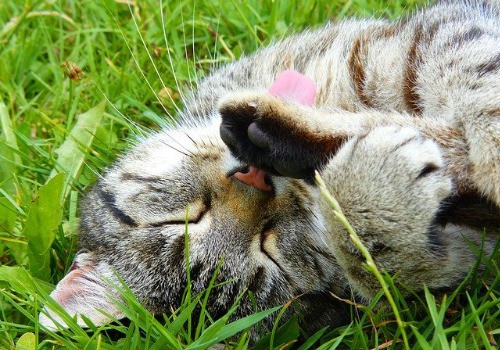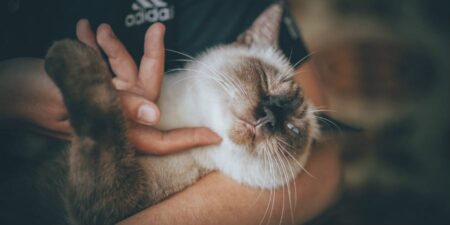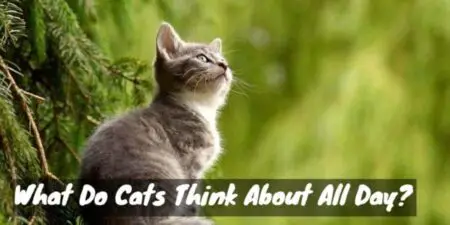Anyone who’s spent any time with cats can attest to their incredible flexibility. They move like perfectly tuned machines, able to bend, twist and contort in ways humans (and most other animals) could only dream of. Whether they’re on the ground or in the air, cats are the undisputed gymnastic champions of the animal kingdom.
But how did cats come to possess such acrobatic prowess? What is the science behind feline anatomy and what benefits does their bendiness bring them? Let’s unravel the mystery of the flexible feline and get to know these special animals a little bit better.
Cat Contortionism: Feats of Feline Flexibility
Sticking the Landing Feet First

It’s common knowledge that cats always land on their feet. They’re able to rotate their bodies in midair with such precision and speed that even an upside down cat will flip itself right side up in a matter of less than a second. That’s a full 180-degree turn, accomplished solely with the power of the cat’s body.
Cats are able to orient themselves as they fall because they have an unusually flexible backbone and no collarbone.
On the Hunt
On the ground, too, cats are master contortionists. This is evident from the tiniest housecat to the largest lions and leopards – just give them something to hunt and watch their bodies work their magic.
Cats on the hunt will shrink themselves down as much as they can, lowering themselves to the ground and retracting their extremities to hide and stalk their prey. Then, when the moment is just right, they pounce, rising up to nine times their height. Suddenly, almost too fast to see, the cat stretches long and wide, with limbs extended and body arched to cut through the air and nab the target.
Deep Cleaning

Grooming provides another great opportunity to observe the fascinating flexibility of cat anatomy. To clean themselves, they bend in ways humans can’t even begin to mimic, twisting their torsos backward to lick their tailbones and lowering their heads between their legs to cleanse their privates. They can even bring their back legs up to their heads to carefully clean in between their toes.
Bendy By Nature
Even when they’re not busy hunting or grooming, cats seem to simply love contorting their bodies. They curl into tight balls, their spines forming improbable concave curves, just as easily as they stretch out so long that their spines become convex. At times they’ll lie with their upper and lower halves facing completely opposite directions, bent nearly 180 degress at the waist.
Feline Anatomy: The Construction of a Cat
The Backbone of Flexibility
At the root of a cat’s flexibility is its spine. Human spines have between 32 and 34 vertebrae (spinal disks) that are packed relatively close together with little padding. Cats, on the other hand, have 52 or 53 widely-spaced vertebrae with smaller extra disks in between to provide elasticity and cushioning.
Because cats have so many vertebrae, their spines are able to perform more fine-tuned movements. The wider spacing between the vertebrae allows for a wider range of curvature and rotation. Thanks to the supplemental cushions in between each vertebrae, the cat’s body is able to handle the extreme bendiness without injury.
The Compressible Collarbone
Another key feature of cat anatomy is the clavicle. Rather than having shoulders and collarbones fixed in place as humans do, cats have a set of tiny collarbones that, along with their shoulderblades, are not attached to other bones to form joints. Rather, they are attached only to muscle.
These free-floating bones make the cat’s front half particularly flexible. When cats need to squeeze into tight spaces, they don’t get stuck at the shoulders; they simply push through and the bones move out of the way. Without the limitations of fixed shoulderblades, the range of motion of the front legs is also increased, which helps account for the incredible speeds that running cats can reach.
Balancing Act
Beyond the skeleton, there is one more feature of cat anatomy that aids in flexibility, particularly during freefall: the vestibular apparatus. Located in the inner ear, this sensory system provides the cat with a spectacular sense of balance and orientation. It is so finely tuned that a falling cat can determine up from down in a fraction of a second and begin righting itself.
Once a falling cat determines its orientation, its special spine and collarbone come into play. The cat extends its back legs and tucks its front legs in, causing the front and back halves of its body to twist in opposite directions. Then it reverses the process, extending its front legs while tucking its back legs in, and repeats these two steps until it’s safely flipped right side up again.
Evolution of an Acrobat: Why Did Cats Become So Flexible?
Made to Move

The average housecat is a far cry from its ancestors, and even from its large wild counterparts that still roam the world today. But every cat, wild or not, owes its flexibility to the tens of thousands of generations of felines that came before it. For those cats from millenia past, flexiblity was critical to their survival.
All cats are apex predators, obligate carnivores who must hunt to survive. Sloppiness and slowness will not result in a meal; to catch prey, a cat must be limber, agile and lightning-fast. A flexible skeletal structure is crucial to these qualities, allowing for much greater power, speed and range of motion.
A Highly Specialized Skeleton
When pursuing prey, there’s no time to get up to speed; a cat needs to go from stationary to maximum velocity in the blink of an eye or it will lose its target. The extremely flexible spine allows the cat to get a powerful running start even from a sitting or crouched position, extending as far as it possibly can to maximize the length of the stride.
The small collarbones and shoulderblades also aid immensely in this feat of speed and power. Without bulky shoulders to limit the range of the front legs, the cat can travel up to three times its body length per stride. The cat’s bones also help during the stalking phase of the hunt by allowing the cat to contract its body tight and low to the ground in order to avoid detection by prey.
"In ancient times cats were worshipped as gods; they have not forgotten this."
-- Terry Pratchett





